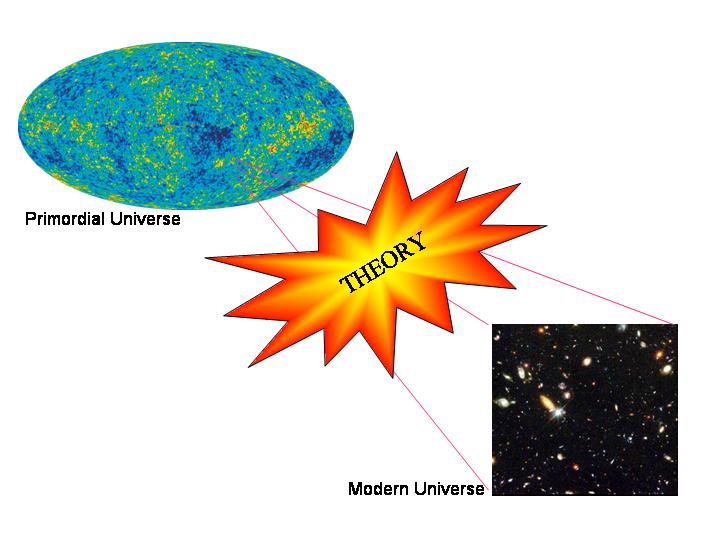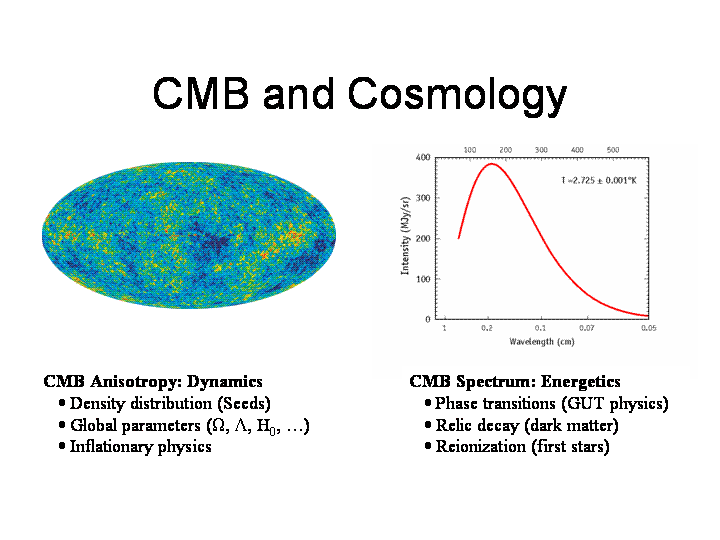 |
 |
ARCADE Science
ARCADE
(Absolute Radiometer for Cosmology, Astrophysics, and Diffuse Emission)
is a high altitude balloon payload designed to study the early universe.
It measures the
frequency spectrum
of the Cosmic Microwave Background (CMB)
at centimeter wavelengths,
to search for signals from the first stars to form after the Big Bang.
It will address the following science goals:
 Observe the formation of structure
from the first stars and galaxies
Observe the formation of structure
from the first stars and galaxies
 Search for particle physics relics
from the Big Bang
Search for particle physics relics
from the Big Bang
 Understand the large-scale structure and energetics of our
Galaxy
Understand the large-scale structure and energetics of our
Galaxy
Modern cosmology is based on the
Hot Big Bang model,
which traces the universe back in time over 13 billion years
to an epoch when the Universe was vastly smaller and hotter
than it is today.
 Heat from the Big Bang still permeates the Universe today,
and can be observed as a faint glow of microwaves
from deep space.
Imbedded within this Cosmic Microwave Background
is a fossil record of the very early universe.
Heat from the Big Bang still permeates the Universe today,
and can be observed as a faint glow of microwaves
from deep space.
Imbedded within this Cosmic Microwave Background
is a fossil record of the very early universe.
 The pattern of hot and cold spots in the microwave background
(anisotropy)
records the spatial distribution of matter and energy
in the early universe.
It encodes the dynamics and basic structure of the universe --
how fast the universe is expanding,
how much matter it contains,
and what types of matter.
By contrast,
the distribution of these microwaves into different wavelengths
(its spectrum)
records the energetics of the early universe.
In essence, the spectrum tells us if any "Little Bangs"
followed the Big Bang.
ARCADE
measures the spectrum of diffuse emission from deep space.
Data from this mission
will help determine
how and when the first stars and galaxies formed,
and whether exotic particles exist.
The pattern of hot and cold spots in the microwave background
(anisotropy)
records the spatial distribution of matter and energy
in the early universe.
It encodes the dynamics and basic structure of the universe --
how fast the universe is expanding,
how much matter it contains,
and what types of matter.
By contrast,
the distribution of these microwaves into different wavelengths
(its spectrum)
records the energetics of the early universe.
In essence, the spectrum tells us if any "Little Bangs"
followed the Big Bang.
ARCADE
measures the spectrum of diffuse emission from deep space.
Data from this mission
will help determine
how and when the first stars and galaxies formed,
and whether exotic particles exist.
ARCADE will measure the heating of the universe by the first stars
and galaxies to form after the Big Bang. It will also search for
the signal of relic decays or annilhilation. ARCADE will measure
distortions from a blackbody spectrum to limits
Free-Free Emission: Y_ff < 10^{-6}
Chemical Potential: mu < 2 x 10^{-5}
|
|


